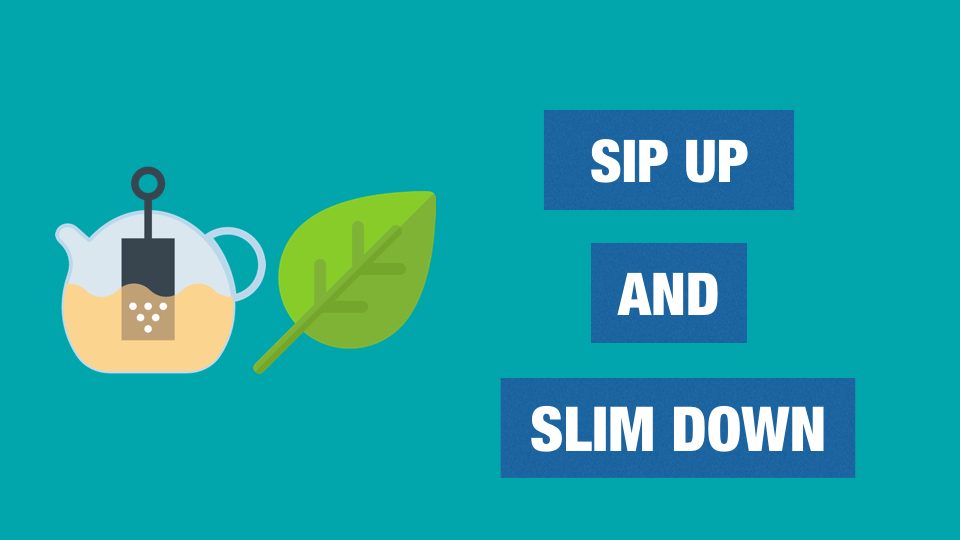
The Green Tea Diet is a simple, natural way to boost weight loss. It consists of drinking at least four glasses of green tea throughout the day, in an effort to suppress the appetite and boost metabolism. It is recommended that a glass be consumed upon awakening, as well as before each meal, and can also be used as a healthy substitute for a snack during the day. A supplement, or green tea extract, can also be used instead of drinking the tea.
Whereas the origin of The Green Tea Diet is unknown, the Chinese and Japanese have been drinking the tea as a healthy option for many centuries. Borrowing from this concept, the western world has begun consuming it in large quantities, discovering its weight loss properties along the way.
How Does the Green Tea Diet Work?
Green tea helps to promote weight loss in several ways:
1. Lowers the amount of carbohydrates, in particular starch, the body absorbs. A study conducted by researchers at the Poznan University in Poland, found that a dose of 4 grams of green tea extract, caused a decrease in starch digestion and absorption.[1]
2. Boosts the metabolism. Research done at the University of Geneva, Switzerland, shows that green tea speeds up the average person’s metabolism, therefore increasing the amount of calories they burn. This is believed to be due to the catechins, potent antioxidants, found in the leaves. In addition, natural green tea is caffeinated and originates from the same plant as black tea, Camellia sinensis. It contains a significantly smaller amount of caffeine[2], which isn’t harmful, but still helps to stimulate and energize those that are consuming it. This can be beneficial for weight loss, as individuals are more energized during workouts.
3. Helps to burn fat stores within the body. To be converted to energy, fat within the body needs to be broken down in the cells, and then moved through the bloodstream. The team at University of Geneva also found that the amount of fat burnt by those who took green tea extract was significantly higher than within the bodies of those that didn’t.
Those who are thinking about using the Green Tea[3] Diet to achieve their weight loss goals will need to keep a few things in mind. These include:
• To maximize the effects of the green tea on weight loss, participants need to consume [4]between 3-5 full glasses per day.
• The best type of green tea to use are brands which use natural products and no artificial preservatives.
• Preferably, tea should be brewed with the leaves instead of a tea bag. This will allow make more of the essence to be extracted, so that it retains its nutrients.
• Water should be poured directly over the tea, right before it boils and the tea brewed for 3-4 minutes.
• Drinking green tea cold[5] is believed to burn more calories than when it is consumed hot, because the body has to burn energy to warm it up after.
3 Top Benefits of the Green Tea Diet
1. According to The University of Maryland Medical Center, the antioxidants in green tea also help to neutralize free radicals in the body which can prevent certain types of cancer and other diseases. They also boost the immune system in other ways.
2. The diet is relatively easy, and inexpensive, and most people can safely do it. Participants should also include a moderate exercise regime for the best weight loss results.
3. Green tea can kill bacteria within the mouth, improving dental health and oral hygiene.
3 Possible Side Effects of the Green Tea Diet
1. Dehydration. Green tea is a natural diuretic, and can lead to dehydration. Those following the diet should balance the amount of tea they drink per day with the same number of glasses of water.
2. Iron deficiency and anemia. Green tea can reduce the rate of absorption of iron by the body.
3. Stomach Problems. The Chinese and Japanese do not consume green tea on an empty stomach, because the tannins[6] it contains may cause stomach aches, nausea or constipation.
Quick and Easy Green Tea Recipes
Lemon Grass and Ginger Green Tea

Ingredients
1 stalk Lemongrass
7 slices ginger
5 green tea bags
Before using, rinse and crush the lemongrass. Then place it, along with the ginger in a saucepan with 2 cups of water. Bring the mixture to a boil, remove from the heat, and add the tea bag. Leave them to brew for five minutes, chill and then serve.
Both lemongrass and ginger aid in digestion, and ginger adds to the green tea energy boost. This results in a healthy drink that promotes healthy digestion, as well as hours of energy.
Mint Green Tea

Ingredients
1/2 cup of fresh mint leaves
2 green tea bags
1 tsp honey (optional)
Wash and dice the mint leaves. Place them, along with the tea bags, in a glass and pour boiling water on them. Brew for 5 minutes. Refrigerate for 2-3 hours, sweeten if desired and serve cold.
Mint helps to speed up digestion, prevent hunger cravings and burn fat in the body. With its low calorie content (a total of 9 calories per glass) it is also a perfect addition to any diet.
Lavender Green Tea

Ingredients
1 1/2 tsp dried lavender blossoms
4 green tea bags
Place the lavender and tea bags in a container, and bring a small saucepan of water to a near boil. Pour the water over the mixture and allow to brew for up to five minutes. Refrigerate and serve chilled, with an optional lavender sprig.
Lavender give a subtle flavor to green tea, making it possible to forgo any added sweeteners and eliminate extra calories.
If you are thinking of beginning the Green Tea Diet, please consult a physician to ensure that you are healthy enough for diet and exercise.
Reference
| [1] | ^ | DailyMail : How green tea could help you stay slim: Extract in the drink found to reduce amount of starch that is absorbed from food |
| [2] | ^ | Healthy Hubb: Does Green Tea Have Caffeine? Why it’s Better than Coffee! |
| [3] | ^ | Authority Nutrients: How Green Tea Can Help You Lose Weight Naturally |
| [4] | ^ | The beauty gypsy:Sip up to slim down: The right way to drink green tea for weight loss |
| [5] | ^ | MedHealth.net:Green Tea Diet |
| [6] | ^ | CureJoy:Green Tea Side Effects And Who Must Avoid It |
function footnote_expand_reference_container() { jQuery(“#footnote_references_container”).show(); jQuery(“#footnote_reference_container_collapse_button”).text(“-“); } function footnote_collapse_reference_container() { jQuery(“#footnote_references_container”).hide(); jQuery(“#footnote_reference_container_collapse_button”).text(“+”); } function footnote_expand_collapse_reference_container() { if (jQuery(“#footnote_references_container”).is(“:hidden”)) { footnote_expand_reference_container(); } else { footnote_collapse_reference_container(); } } function footnote_moveToAnchor(p_str_TargetID) { footnote_expand_reference_container(); var l_obj_Target = jQuery(“#” + p_str_TargetID); if(l_obj_Target.length) { jQuery(‘html, body’).animate({ scrollTop: l_obj_Target.offset().top – window.innerHeight/2 }, 1000); } }
Source: Lifehack.






